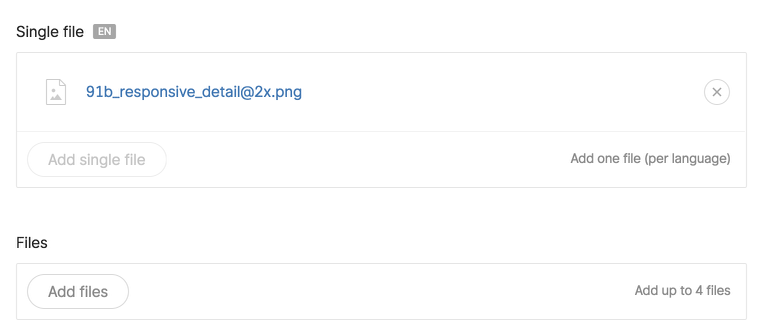# Files

@formField('files', [
'name' => 'single_file',
'label' => 'Single file',
'note' => 'Add one file (per language)'
])
@formField('files', [
'name' => 'files',
'label' => 'Files',
'max' => 4,
])
| Option | Description | Type/values | Default value |
|---|---|---|---|
| name | Name of the field | string | |
| label | Label of the field | string | |
| itemLabel | Label used for the Add button | string | |
| max | Max number of attached items | integer | 1 |
| fieldNote | Hint message displayed above the field | string | |
| note | Hint message displayed in the field | string | |
| buttonOnTop | Displays the Add button above the files | true false | false |
Similar to the media formField, to make the file field work, you have to include the HasFiles trait in your module's Model, and include HandleFiles trait in your module's Repository. At last, add the filesParams configuration array in your model.
public $filesParams = ['file_role', ...]; // a list of file roles
Learn more at Model, Repository.
If you are using the file formField in a block, you have to define the files key in config/twill.php. Add it under block_editor key and at the same level as crops key:
return [
'block_editor' => [
'crops' => [
...
],
'files' => ['file_role1', 'file_role2', ...]
]
No migration is needed to save files form fields.
← Medias Datepicker →